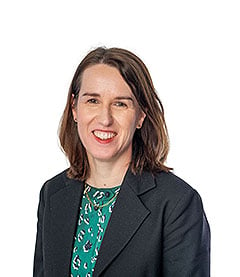-
Compliance and audit reviews
From mandates, best practice procedures or accreditations, to simply gaining peace of mind, our technical and industry experts have you covered.
-
External audit
Strengthen business and stakeholder confidence with professionally verified results and insights.
-
Financial reporting advisory
Deep expertise to help you navigate New Zealand’s constantly evolving regulatory environment.
-
Corporate tax
Identify tax issues, risks and opportunities in your organisation, and implement strategies to improve your bottom line.
-
Indirect tax
Stay on top of the indirect taxes that can impact your business at any given time.
-
Individual tax
Preparing today to help you invest in tomorrow.
-
Private business tax structuring
Find the best tax structure for your business.
-
Tax disputes
In a dispute with Inland Revenue or facing an audit? Don’t go it alone.
-
Research & development
R&D tax incentives are often underused and misunderstood – is your business maximising opportunities for making claims?
-
Management reporting
You’re doing well, but could you be doing even better? Discover the power of management reporting.
-
Financial reporting advisory
Deep expertise to help you navigate New Zealand’s constantly evolving regulatory environment.
-
Succession planning
When it comes to a business strategy that’s as important as succession planning, you can’t afford to leave things to chance.
-
Trust management
Fresh perspectives, practical solutions and flexible support for trusts and estate planning.
-
Forecasting and budgeting
Prepare for every likely situation with robust budgeting and forecasting models.
-
Outsourced accounting services
An extension of your team when you need us, so you can focus your time, energy and passion on your business.
-
Setting up in New Zealand
Looking to set up a business in New Zealand? You’ve come to the right place.
-
Policy reviews & development
Turn your risks into strengths with tailored policies that protect, guide and empower your business.
-
Performance improvement
Every business has untapped potential. Unlock yours.
-
Programme & project management
Successfully execute mission-critical changes to your organisation.
-
Strategy
Make a choice about your vision and purpose, where you will play and how you will win – now and into the future.
-
Risk
Manage risks with confidence to support your strategy.
-
Cloud services
Leverage the cloud to keep your data safe, operate more efficiently, reduce costs and create a better experience for your employees and clients.
-
Data analytics
Use your data to make better business decisions.
-
IT assurance
Are your IT systems reliable, safe and compliant?
-
Cyber resilience
As the benefits technology can deliver to your business increases, so too do the opportunities for cybercriminals.
-
Virtual asset advisory
Helping you navigate the world of virtual currencies and decentralised financial systems.
-
Virtual CSO
Security leadership and expertise when you need it.
-
Debt advisory
Raise, refinance, restructure or manage debt to achieve the optimal funding structure for your organisation.
-
Financial modelling
Understand the impact of your decisions before you make them.
-
Raising finance
Access the best source of funding for your business with a sound business strategy and rigorous planning.
-
Business valuations
Valuable decisions require valued insights.
-
Complex and international services
Navigate the complexities of multi-jurisdictional insolvencies.
-
Corporate insolvency
Achieve fair and orderly outcomes if your business – or part of it - is facing insolvency.
-
Independent business review
Is your business viable today? Will it be viable tomorrow? Give your business a health check to find out.
-
Litigation support
Straight forward advice from trusted advisors to support litigation and arbitration matters, expert determinations and other specialist hearings.
-
Business valuations
Valuable decisions require valued insights.
-
Forensic accounting & dispute advisory
Understand the true values, numbers and dollars at stake, as well as your obligations and rights to ensure value is preserved and complexities are managed.
-
Expert witness
Our expert witnesses analyse, interpret, summarise and present complex financial and business-related issues which are understandable and properly supported.
-
Investigation services
A fast and customised response when misconduct occurs in your business.

Immigration tweaks and training funds a few bright spots
To start on a positive note, there have been a few glimmers of good news for general practice over the past months. First, money allocated in Budget 2022 has just started to flow into primary care, which will support more funding based on how many high-needs patients are enrolled. It’s heartening that both New Zealand’s major political parties broadly support strong funding for healthcare, so we don’t have the destructive funding flip-flops we sometimes see overseas.
There have also been much-needed boosts to international recruitment. In April 2023, nurses and doctors were among 32 health sector roles added to the Straight to Residency immigration pathway. It followed a new immigration pathway that was quietly launched in December 2022, and funding for a training scheme for nurse practitioners.
And finally, in October 2022 it was announced that first-year GPs would get pay rises, and specialist GPs would receive more funding to train GPs and host junior doctors.
Problems remain overwhelming
The problems overwhelm the bright spots, which is a fitting metaphor for the job of GP itself. There was some damning proof in the 2022 Workforce Survey by the Royal New Zealand College of General Practitioners:
- 25% of respondents were aged 62 or over, and 55% of respondents said they planned to retire by 2032
- 79% said they were experiencing burnout, with nearly half (48%) rating their burnout level as ‘high’
- A third (31%) said they would not recommend general practice as a career
- 20% of work was unpaid time
And according to the 2021 GP Future Workforce Requirement Report, there will be a shortfall of 300 GPs by 2031.
Some quick wins in this year’s Budget could help ease the pressure
There is some low-hanging fruit that could be implemented to help alleviate some of the pressure on GPs.
1. Train more doctors
More GPs would distribute the load, reducing the patient demand on each individual practitioner. That would hopefully translate into shorter waiting times for patients, lower rates of burnout for doctors, and less stress for everyone working at a practice. It would also provide succession options for older practitioners who would like to retire.
At a national level, the Future Workforce report estimated that training 100 extra GPs each year would significantly benefit the New Zealand economy. The report calculated it would produce a net gain of between $338 million and $800 million.
2. Show junior doctors the advantages of general practice
It would be fantastic to see all junior doctors spend time in a general practice setting to see the advantages before ruling it out as a career option. It has a degree of flexibility, community and sociability, but many junior doctors are dismissing it without full consideration.
I believe increasing post graduate time in general practice to six months or more, up from the current 13 weeks, would help recruit more GPs.
For this to work, funding must also increase for the practices that host and train the juniors. Under the new funding, each placement of a PGY1 or PGY2 doctor on a 13-week community-based attachment, a practice will receive $3,600. But that equates to $200 a week, or $40 per day; simply not a suitable rate of recompense in a developed economy. General practice owners will tell you this does not go nearly far enough to cover the real costs of lost revenue.
3. Recognise and incentivise fellowships
Currently there is no financial recognition for GPs who attain fellowship from the Royal New Zealand College. By adding a financial incentive, it will encourage more GPs to complete the GPEP programme and retain them in the specialty for longer.
4. Recruit more international doctors and nurses – and incentivise rural practice
The recent changes introduced to recruit more doctors and nurses from overseas are welcome, but this needs to keep gaining momentum. We must make the profession less stressful, so GPs don’t simply move here and then springboard themselves directly into better-paid roles in Australia.
Immigrants disproportionately move to cities, particularly Auckland, so we need to focus recruitment on bringing doctors to rural areas and incentivising them to stay. That type of incentive will also need to apply to local graduates, particularly since the problem of impending retirement is most acute in the provinces.
5. Include general practice nurses in the recent pay rise
The recent pay increase for community nurses did not include those in general practice. That could easily be amended in Budget 2023, which would support staff retention and allow practices to pay nurses more. Otherwise, the risk is that nurses leave general practice to move into better-paid positions in public hospitals.
When GPs are in short supply, it affects everyone
When patient demand begins to overwhelm general practices, or there are too few GPs to treat the people who want to see them, it becomes difficult for all patients to get appointments.
These patients often end up at our public hospitals or accident and emergency departments, because they need medical care they can’t access it at their local GP. This simply exacerbates the pressure our hospitals are already experiencing, leading to increased unnecessary costs for our economy. In the worst-case scenarios, patients who can’t see their doctor may put off seeking care for too long, and then require expensive treatments for more severe illnesses – or die prematurely.
This cascade of negative outcomes has no upside, so it’s imperative that we support GPs and try to take some of the weight off their shoulders. The result will be a boost to our economy, happier doctors, more positive outcomes for patients, and better health for everyone in Aotearoa.






